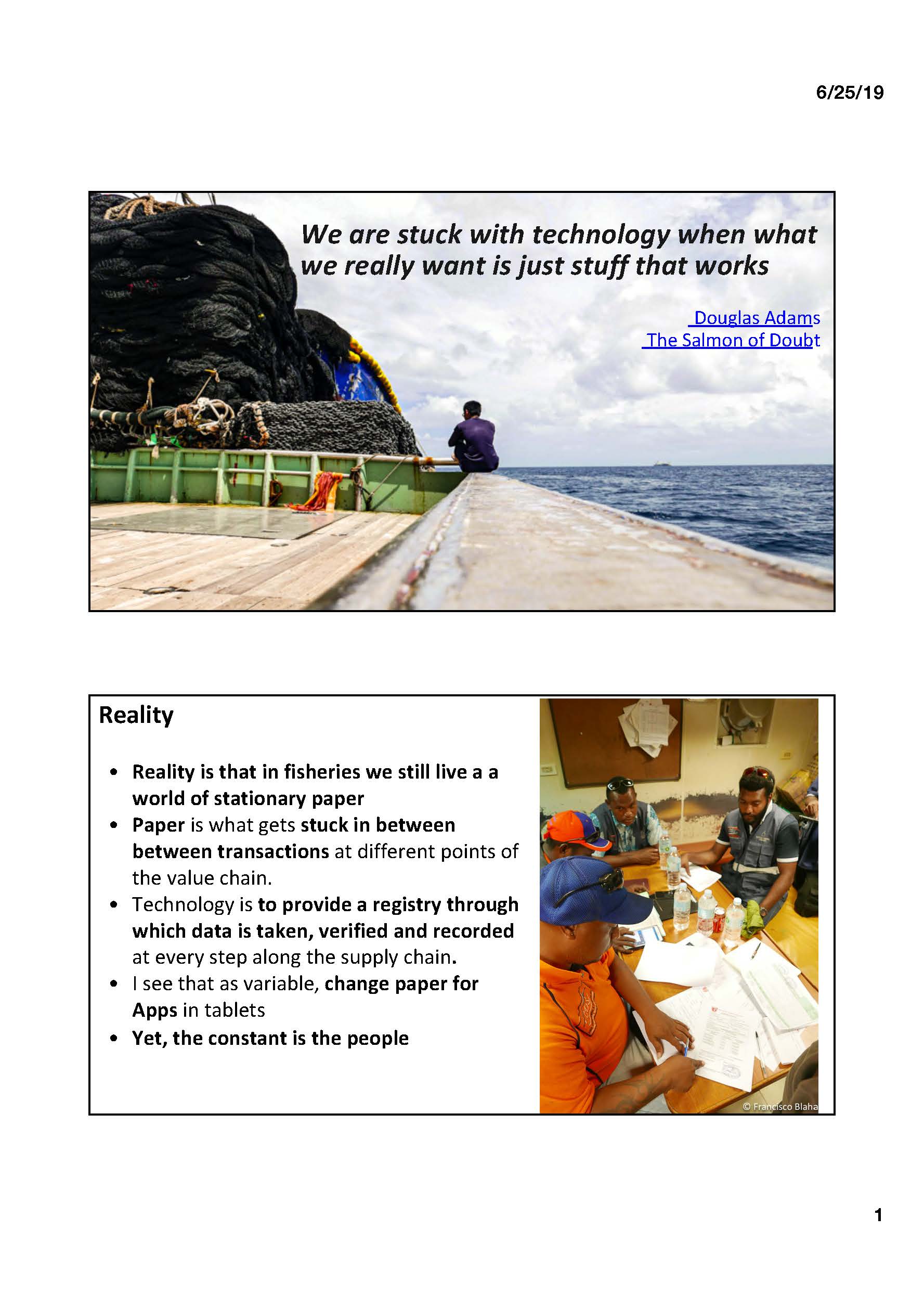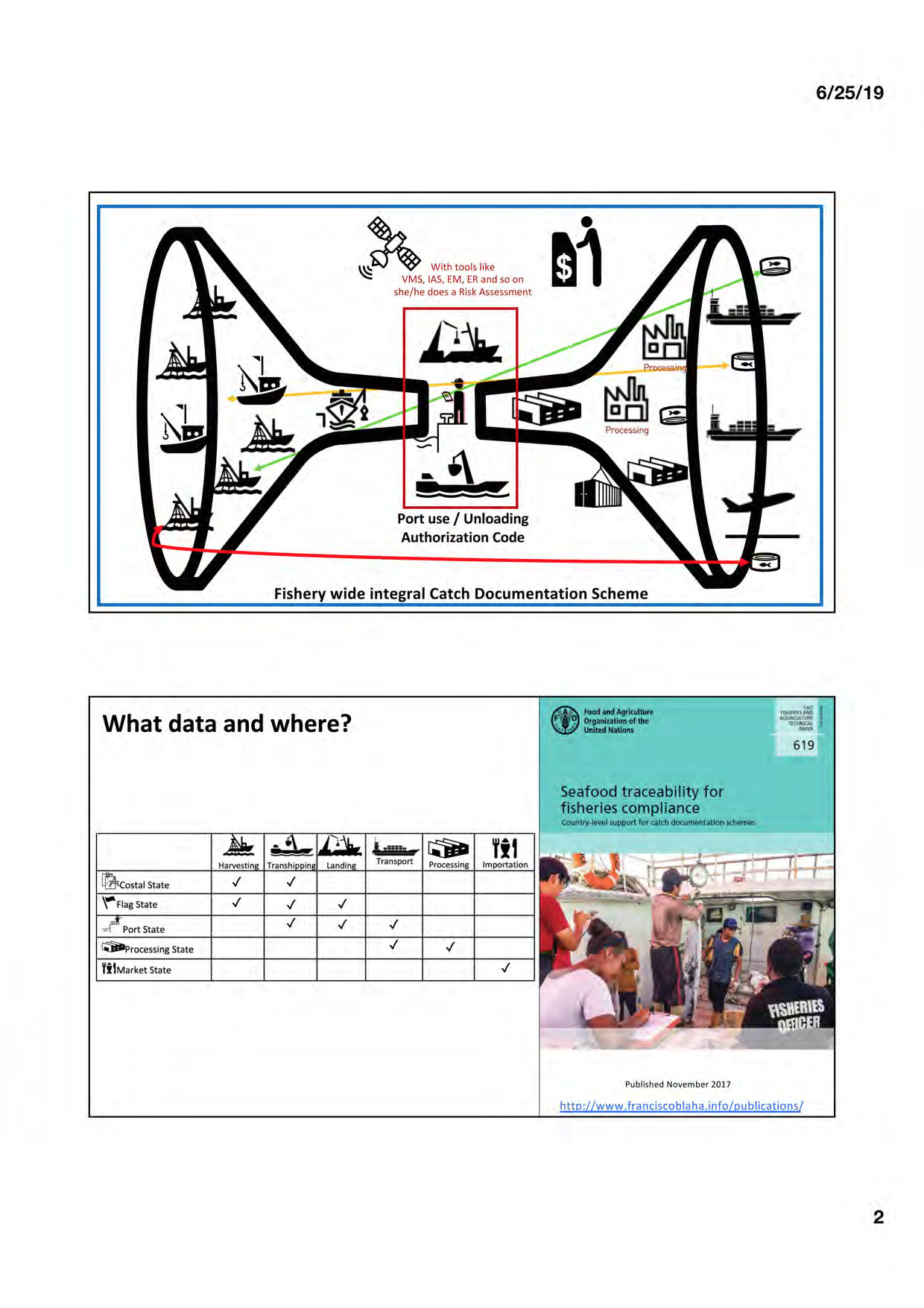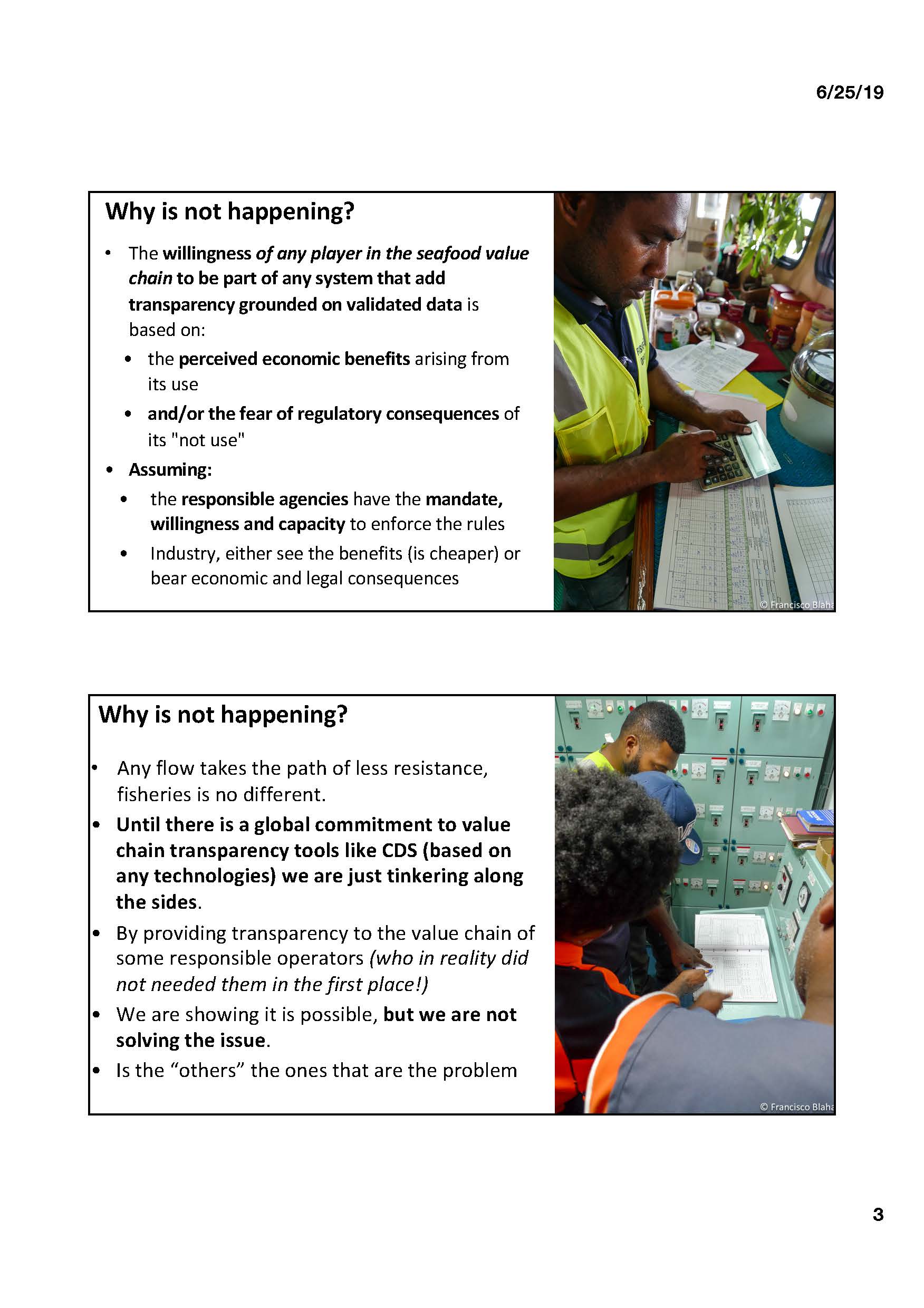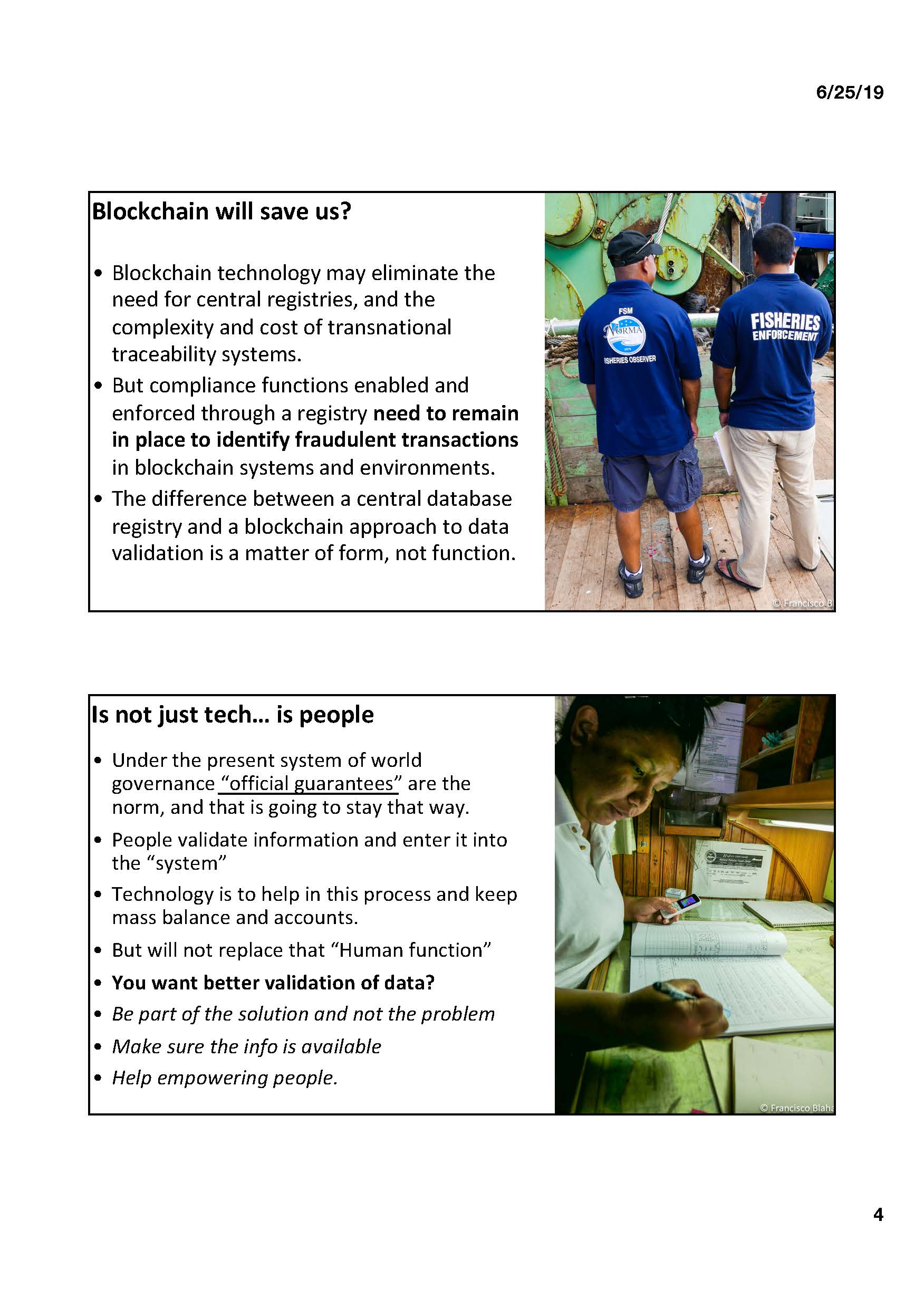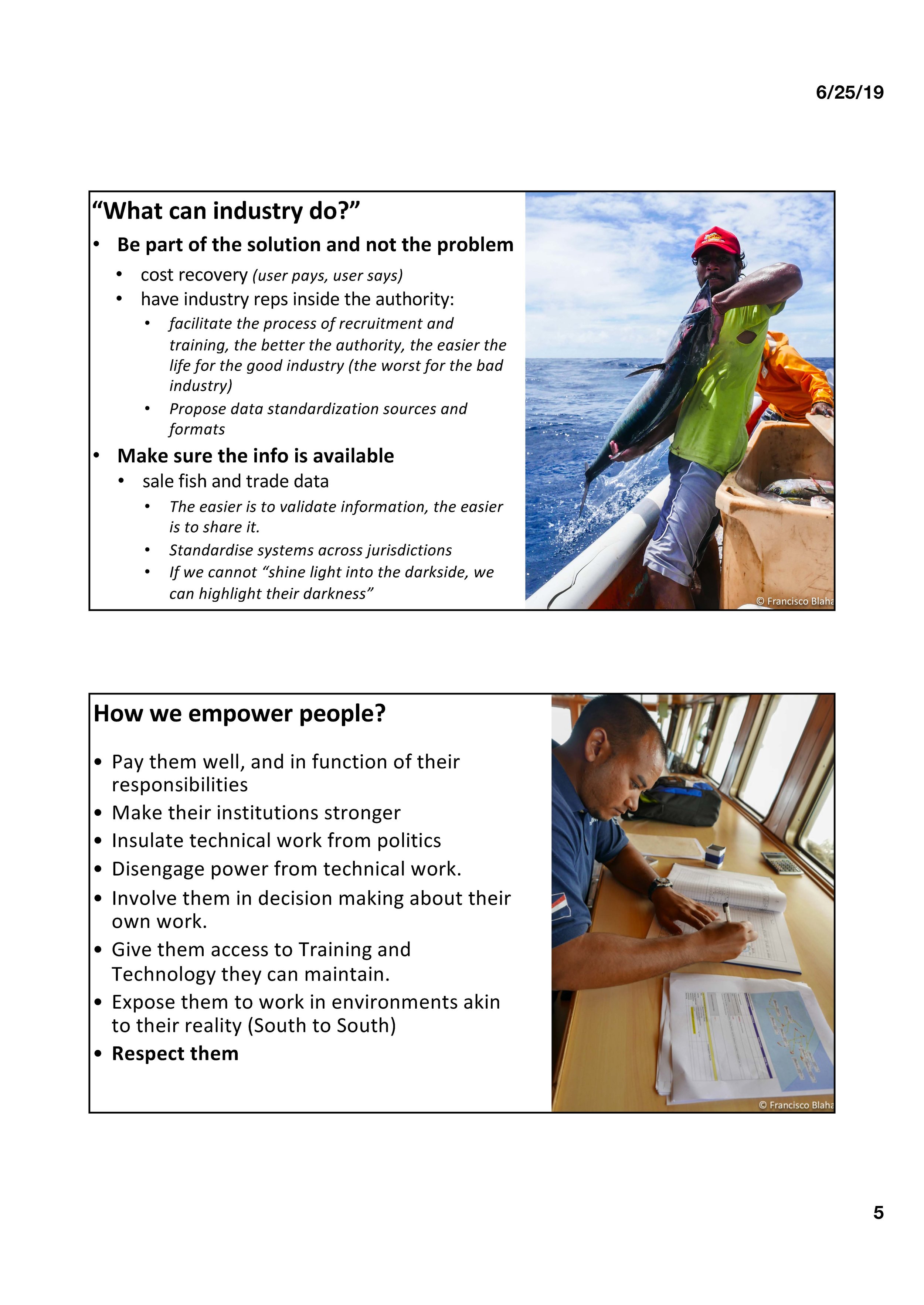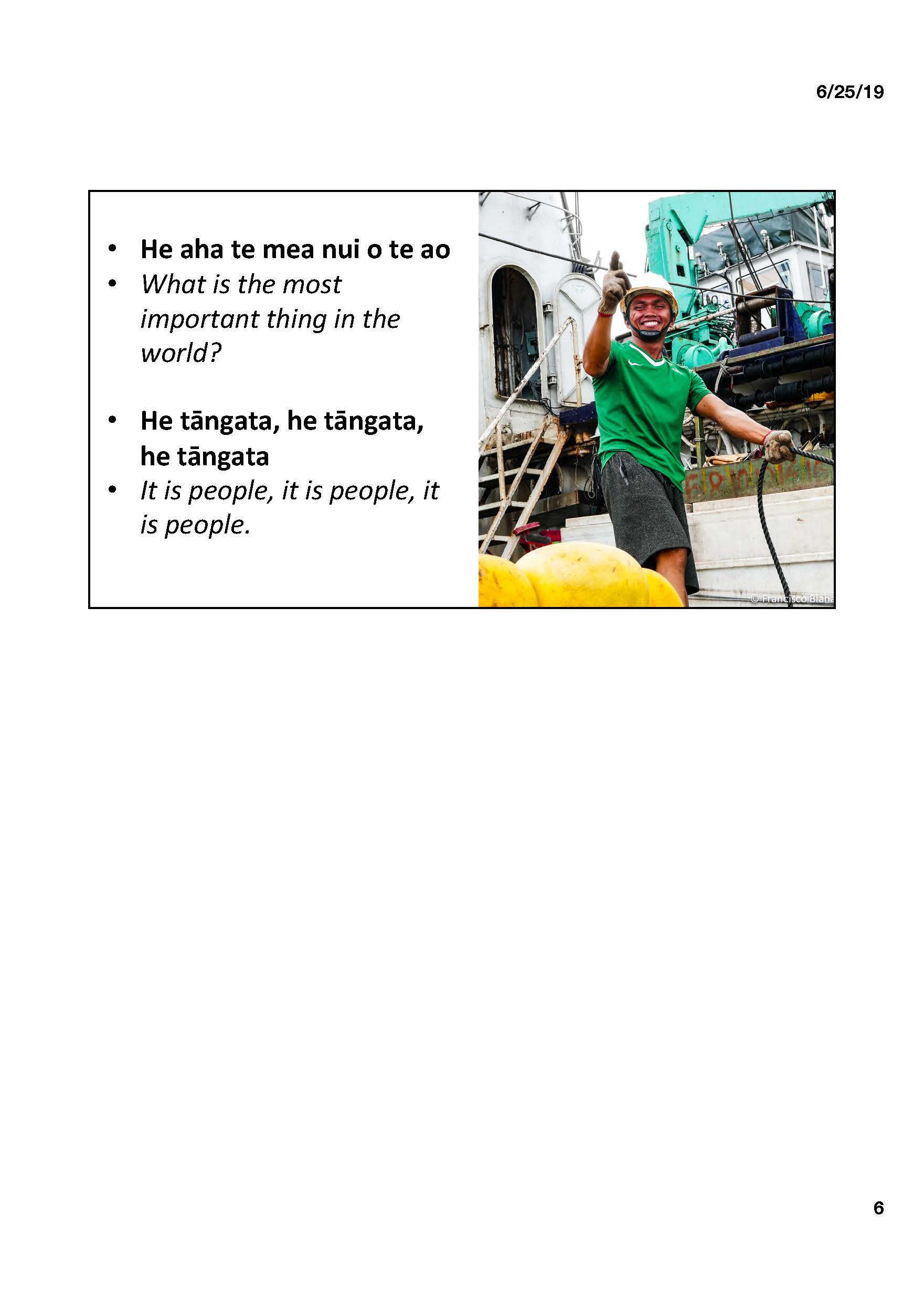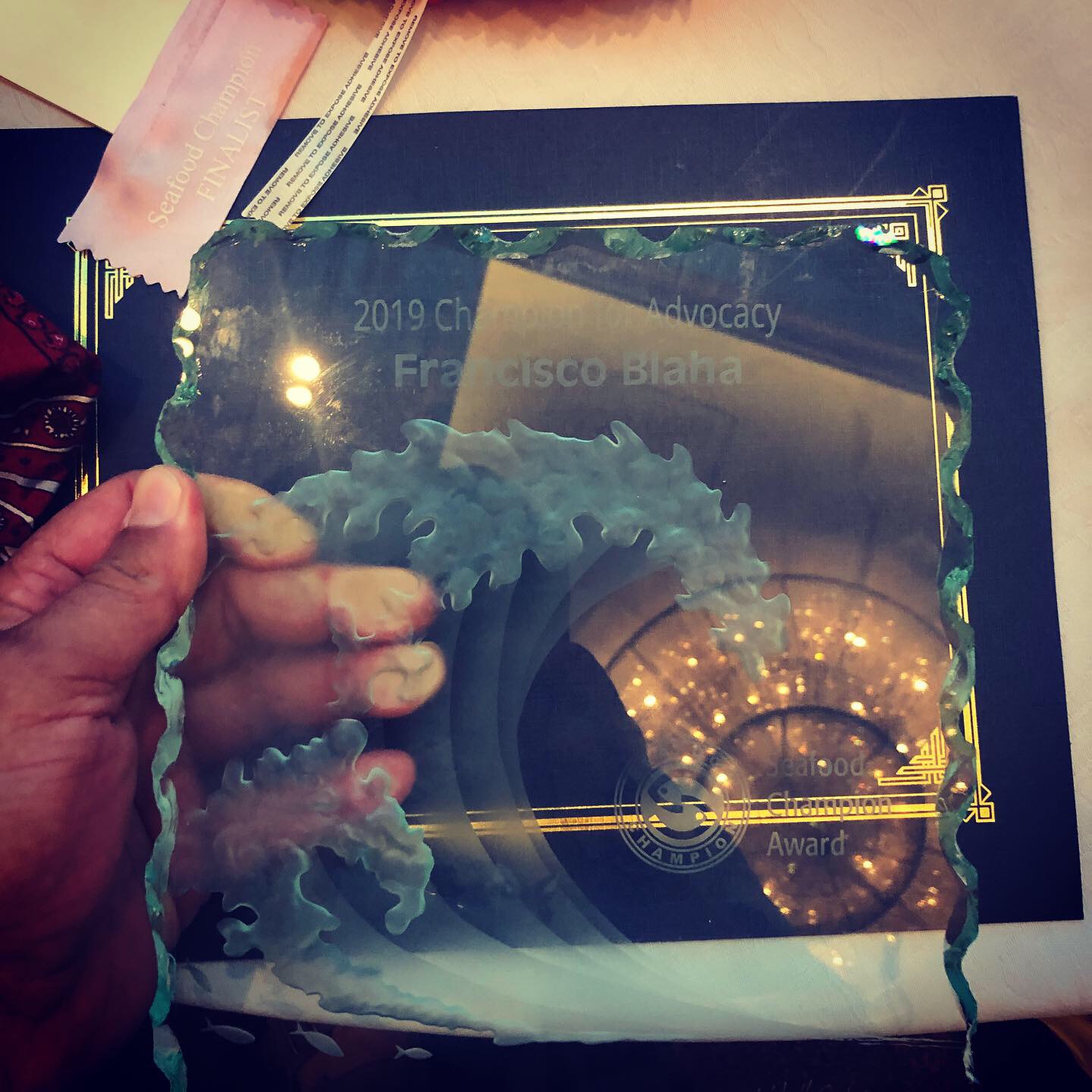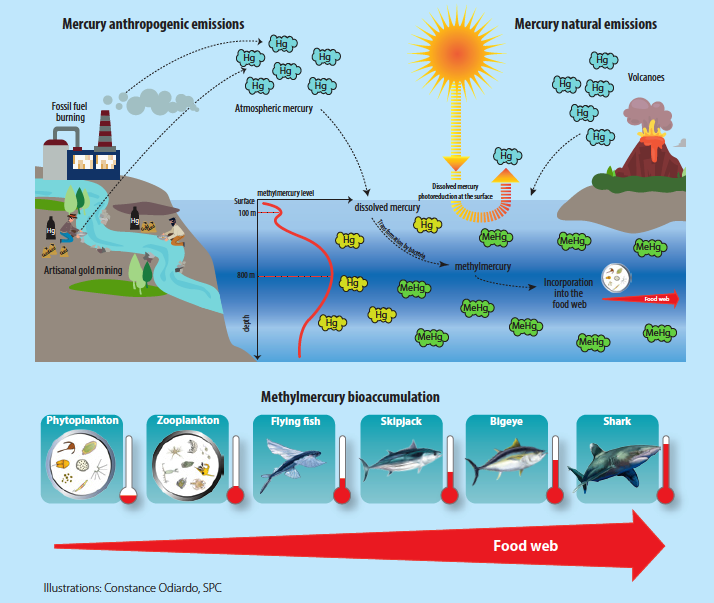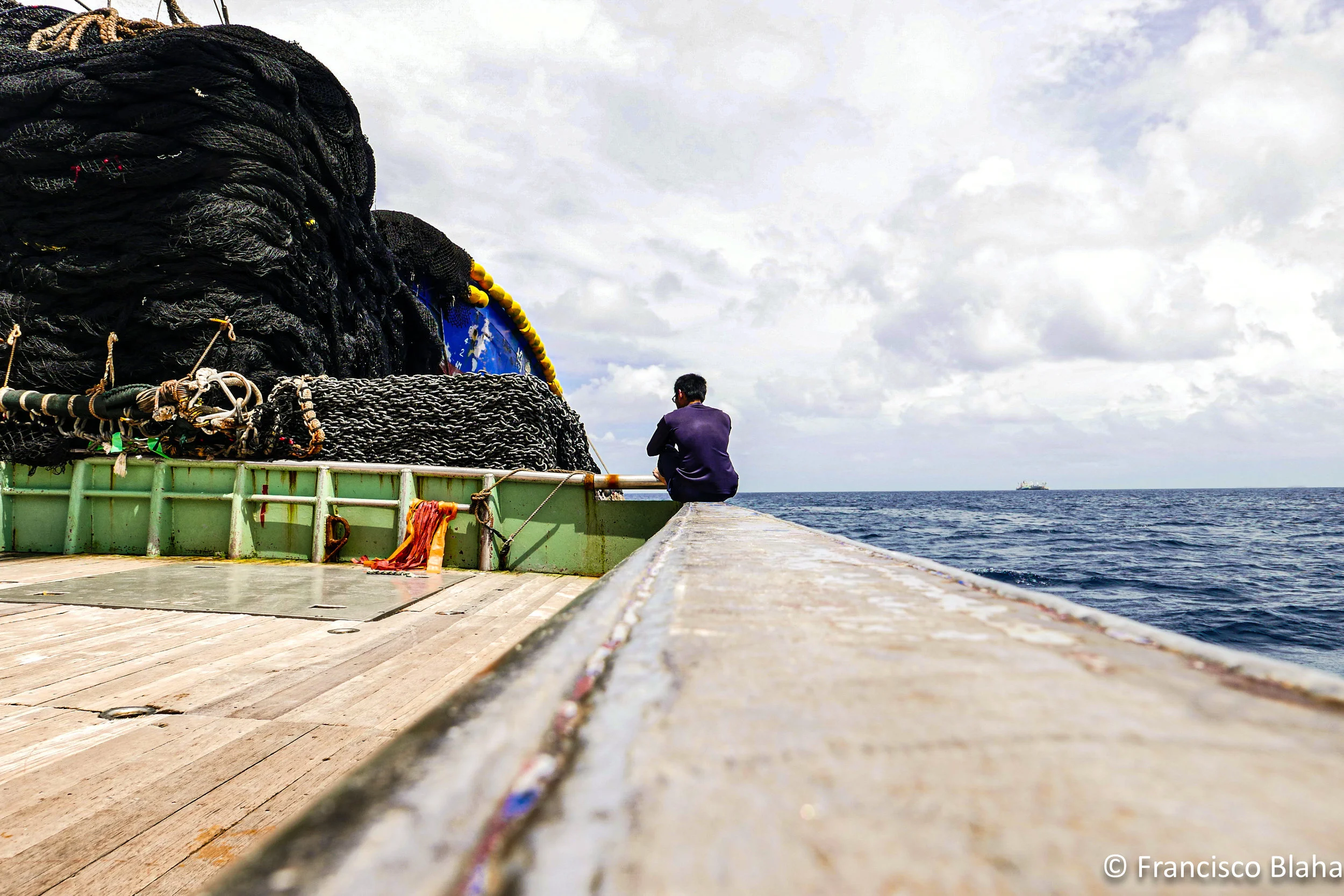I wrote before about the frontline work that my colleagues in SPC are doing on the present and future impacts of climate change on the fisheries of the Pacific islands… and is not a nice picture.
Pacific islands are the lesser contributors of greenhouse emissions in the world, yet are the ones paying the dearest consequences, not just on the terrible fact that their landmass are submerging but also their tuna fisheries (the lifeline of their economies) are moving further and further East. The injustice of this situation is overwhelming.
The projected eastward redistribution of skipjack and yellowfin tuna due to climate change is expected to reduce the total tuna catch within the combined EEZs of the 10 PICTs where most purse-seine occurs by approximately 10% by 2050. The projected decreases in purse-seine catches are likely to reduce the contributions that tuna fishing licence fees make to the government revenues of many of these PICTs. Identifying how to maintain the benefits from tuna in the face of the impacts of climate change is essential for Pacific Island economies.
SPC recently published a policy brief for its members that is a sobering reading, I quote it below.
Purpose
The aims of this policy brief are to:
summarise the latest projected effects of climate change on tuna caught by purse-seine in the exclusive economic zones (EEZs) of Pacific Island countries and territories (PICTs); and
raise awareness of the implications of climate-driven movement of tuna for government revenues earned by PICTs from industrial tuna fishing, and for other socio- economic benefits derived from tuna.
Economic importance of tuna fishing
The economic development of PICTs depends heavily on the tuna resources of the western and central Pacific Ocean (WCPO) and on purse-seine fishing. The WCPO tuna catch averaged 2.7 million tonnes per year between 2014 and 2018, with harvests from the EEZs of PICTs representing 58% of this catch.
Purse-seine fishing produces an average of 70% of the WCPO tuna catch. The purse-seine catch is dominated by skipjack tuna (76%), with yellowfin and bigeye tuna comprising 20% and 4%, respectively.
Licence fees from tuna fishing make extraordinary contributions to the government revenues of many PICTs. Purse-seine fishing provides the vast majority of these important national economic benefits. Six PICTs derive approximately 30–100% of their government revenues from tuna fishing licence fees (Figure 1).
Tuna fishing also makes significant contributions to the gross domestic product of Federated States of Micronesia and Marshall Islands. It also supports the employment of almost 25,000 people across the region, through jobs on fishing vessels, in fish processing operations, and in management of tuna fisheries.
By 2035, 25% of all fish required for food security of Pacific Island people will need to be supplied by tuna. To meet this need, more than 85,000 tonnes of tuna and tuna-like species will be required annually for domestic consumption within the next 15 years.
The tuna stocks that provide these economic and social benefits are in a healthy condition (i.e., none of the tropical tuna species are overfished and overfishing is not occurring), due largely to strong management of purse-seine fishing in the EEZs of PICTs, particularly in the waters of the Parties to the Nauru Agreement (PNA).
The Regional Roadmap for Sustainable Pacific Fisheries, endorsed by Pacific Islands Forum Leaders in 2015, recognises the deep dependence of PICTs on tuna, and outlines plans to maximise the sustainable economic and social benefits derived from this valuable natural resource. However, a key question is, ‘Will climate change disrupt the goals of the Roadmap?’
Projected changes in distribution of tuna
The most recent modelling of projected changes to the biomass of tuna in the EEZs of PICTs, and high-seas areas (Figure 2), indicates that continued high greenhouse gas (GHG) emissions are very likely to alter the distribution of skipjack and yellowfin tuna. Both species are expected to shift progressively to the east, and to subtropical areas, by 2050 (Figure 2).
Figure 2. Projected distributions of skipjack and yellowfin tuna biomass in the Pacific Ocean in 2005, and in 2050 under a high greenhouse gas emissions scenario
In contrast, the redistribution of bigeye tuna due to climate change is expected to be modest (Table 1).
Figure 3. High-seas areas in the western and Central Pacific Ocean and eastern Pacific Ocean used to estimate changes in biomass of tuna.
In general, climate-driven movements of skipjack and yellowfin tuna are expected to decrease the biomass of both species in the EEZs of PICTs west of 170°E, and to increase their biomass in the EEZs of PICTs east of 170°E and in subtropical waters (Table 1).
The biomass of skipjack and yellowfin tuna is also projected to increase in most high-seas areas because these areas occur mainly east of 170°E or in subtropical regions. The equatorial high-seas pockets (I1, I2, I3 and H4 in Figure 3) are the exception – the biomass of skipjack and/or yellowfin tuna is projected to decrease in those areas (Table 1).
Table 1. Projected changes (%) in biomass of skipjack (SKJ), yellowfin (YFT) and bigeye (BET) tuna by 2050 under a high emissions scenario in the exclusive economic zones (EEZs) of the 10 Pacific Island countries and territories where most purse-seine fishing occurs, and in the high-seas areas shown in Figure 3.
Implications for Pacific Island economies
Based on the assumption that there is a direct relationship between the amount of tuna caught within an EEZ and the fishing licence fees paid to a PICT, the progressive eastward movement of tuna is expected to reduce total government revenue in the majority of the 10 PICTs where most purse-seine fishing occurs.
By 2050, under a high GHG emissions scenario, movement of a greater proportion of the tuna caught by purse-seine into high-seas areas (where industrial fishing fleets do not have to pay for fishing access) could reduce total government revenue in many PICTs by up to 15% (Table 2).
Climate-driven redistribution of tuna could reduce the combined annual fishing licence revenues received by the 10 PICTs by more than USD 60 million at today’s values (Table 2).
However, the estimated percentage changes in total government revenues for each PICT (Table 2) need to be treated with caution. At present, these estimates do not account for i) management responses; ii) effects of changes in tuna biomass on catch and effort, and therefore the value of access to particular EEZs; and iii) the impact of tuna redistribution on the degree of control that PICTs exert over fisheries targeting tuna. For example, movement of more tuna from the EEZs of PNA countries into high-seas areas would be expected to reduce the effectiveness of the PNA Vessel Day Scheme to some extent.
Table 2. Tuna licence fees earned by 10 Pacific Island countries and territories (PICTs) in 2016, and projected changes in licence fees and total government revenue by 2050 due to redistribution of tuna. Projected changes in tuna biomass are averages for skipjack, yellowfin and bigeye tuna (Table 1), weighted by 76%, 20% and 4%, respectively.
Policy considerations
The projected loss of government revenue by tuna-dependent Pacific Island economies, which produce a trivial percentage of global GHG emissions, positions PICTs to negotiate to retain the important socio-economic benefits they receive from tuna, regardless of climate-driven redistribution of tuna resources.
To strengthen such negotiations, the uncertainty associated with the modelling and preliminary economic analyses described above needs to be reduced. Some of this uncertainty arises because the climate modelling assumes that skipjack, yellowfin and bigeye tuna resources in the Pacific Ocean are each comprised of a single mixed stock. Preliminary genetic research indicates that this is unlikely to be the case.
To reduce uncertainty and enable PICTs to assess climate-driven losses in government revenues and related economic benefits from tuna fishing with confidence, investments are needed to:
identify the structure of Pacific tuna stocks; i.e., the number of self-replenishing populations (‘stocks’) within the range of each tuna species;
model the response of each stock under both high- and low-GHG emissions scenarios; and
compile integrated maps of the expected redistribution of each tuna species within its range under different GHG emissions scenarios.
These investments will enable PICTs to identify future changes in tuna revenue with greater certainty, and to negotiate arrangements to retain the present benefits they receive from tuna, regardless of the impacts of ocean warming on the tuna resources currently within their EEZs.




























